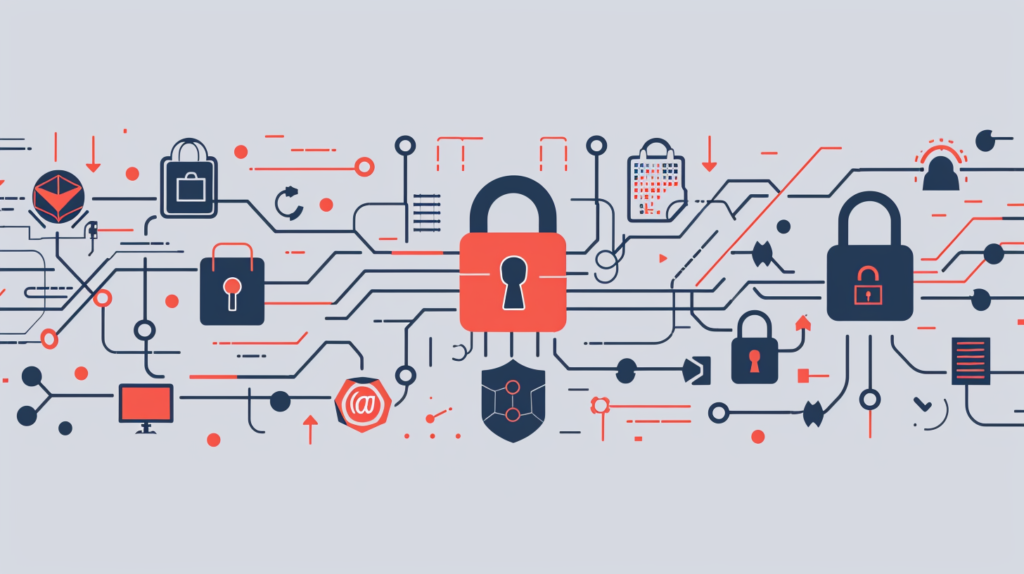The digital age brings vast opportunities, but with those come significant risks, particularly in cybersecurity. Organizations must develop a robust governance plan to manage these risks effectively. A cybersecurity governance plan ensures that cybersecurity strategies align with business objectives, compliance requirements, and risk management practices. Here’s how to create a solid framework for your cybersecurity governance plan.
Understanding Cybersecurity Governance
Cybersecurity governance involves establishing a framework to protect an organization’s information assets. It provides direction and control over actions and decisions regarding cybersecurity. This includes creating policies, assigning responsibilities, and establishing processes to protect against threats. Without governance, organizations risk being unprepared for attacks, which can lead to financial losses and reputational damage.
Define Objectives
Start with clear objectives. What do you want your cybersecurity governance plan to achieve? Common objectives include:
- Protecting Information Assets: Safeguarding sensitive data is paramount.
- Compliance: Ensuring adherence to relevant laws and regulations.
- Risk Management: Identifying and mitigating potential threats.
- Incident Response: Establishing protocols for responding to security breaches.
By outlining these objectives, you create a foundation for your governance plan. It keeps your efforts focused and ensures everything you do aligns with your company’s overarching goals.
Identify Stakeholders
Engaging the right stakeholders is critical. This includes IT staff, executives, legal teams, and risk management personnel. Each group plays a vital role in cybersecurity governance:
- IT Team: Responsible for the implementation of cybersecurity measures.
- Executives: Provide strategic direction and allocate resources.
- Legal Team: Ensures compliance with relevant regulations.
- Risk Management: Identifies and evaluates risk across the organization.
Having a diverse group of stakeholders increases the plan’s robustness by incorporating various perspectives and expertise.
Assess Current Security Posture
Understanding where your organization currently stands is essential. Conduct an audit of existing cybersecurity measures. This includes reviewing policies, procedures, technologies, and awareness programs. Identify gaps and areas for improvement. Consider questions like:
- How well do our current protections defend against breaches?
- Are employees aware of their cybersecurity responsibilities?
- Do we have a clear incident response plan?
By assessing your current posture, you can make informed decisions on where to focus your resources.
Develop Policies and Procedures
With your objectives, stakeholders, and current posture in mind, draft clear policies and procedures. These should outline:
- Access Controls: Define who can access what information.
- Data Protection: Guidelines on data encryption and storage.
- Incident Response: A step-by-step plan for handling breaches.
- Employee Training: Regular training sessions for staff on cybersecurity practices.
These documents should be easily accessible and understandable. Clear communication contributes to a culture of security awareness within the organization.
Implement the Plan
Implementation is where the governance plan comes to life. Assign roles and responsibilities. Ensure the IT team has the necessary tools and resources to implement security measures. Regularly communicate with all stakeholders to keep them informed about their roles in safeguarding the organization.
Consider rolling out the plan in phases to allow for adjustments based on feedback or unforeseen challenges.
Monitor and Review
No governance plan is static. Continuously monitor the effectiveness of your cybersecurity measures. Use metrics to track incidents, response times, and compliance with policies. Regular audits can help identify new risks or areas requiring improvement.
Schedule routine reviews of the governance plan to accommodate changes in technology, business landscape, or regulatory requirements. This ensures the plan evolves alongside potential threats.
Foster a Security Culture
Cultivating a strong cybersecurity culture is crucial. Employees should understand that cybersecurity is everyone’s responsibility, not just the IT department’s. Engage staff through:
- Training and awareness programs.
- Regular updates on emerging threats.
- Encouraging reporting of suspicious activities.
A culture of security fosters vigilance and encourages proactive measures, reducing the likelihood of breaches.
Engage with External Experts
Considering the complexity of cybersecurity, engaging with external experts can provide valuable insights. Consultants can identify vulnerabilities that may be overlooked internally. They also keep you informed about the latest threats and best practices. Think about establishing partnerships with cybersecurity firms or legal advisors to enhance your governance framework.
Evaluate Technology Solutions
Technology plays a critical role in cybersecurity governance. Evaluate existing tools and consider implementing new solutions like:
- Firewalls: Protect against unauthorized access.
- Intrusion Detection Systems: Identify suspicious activities.
- Data Loss Prevention: Prevent data breaches by monitoring and controlling data movement.
Choose tools that align with your objectives and enhance your overall security posture. Technology should support your governance plan, not define it.
Document Everything
Documentation is vital for transparency and accountability. Keep records of policies, procedures, incidents, and reviews. This gives stakeholders insight into the governance process and helps during audits or compliance checks. Additionally, documentation serves as a reference for onboarding new employees and informing them of existing policies.
Communicate to Leadership
Regularly update leadership on cybersecurity governance. Highlight successes, challenges, and the overall security landscape. This fosters an environment where cybersecurity remains a priority and ensures ongoing support for initiatives and resources needed to protect the organization.
Conclusion
A well-structured cybersecurity governance plan is essential for any organization looking to safeguard its information. By defining objectives, engaging stakeholders, and continuously monitoring the plan’s effectiveness, you can create a resilient framework. Foster a culture of security awareness, invest in technology, and document every step to stay ahead of threats.

